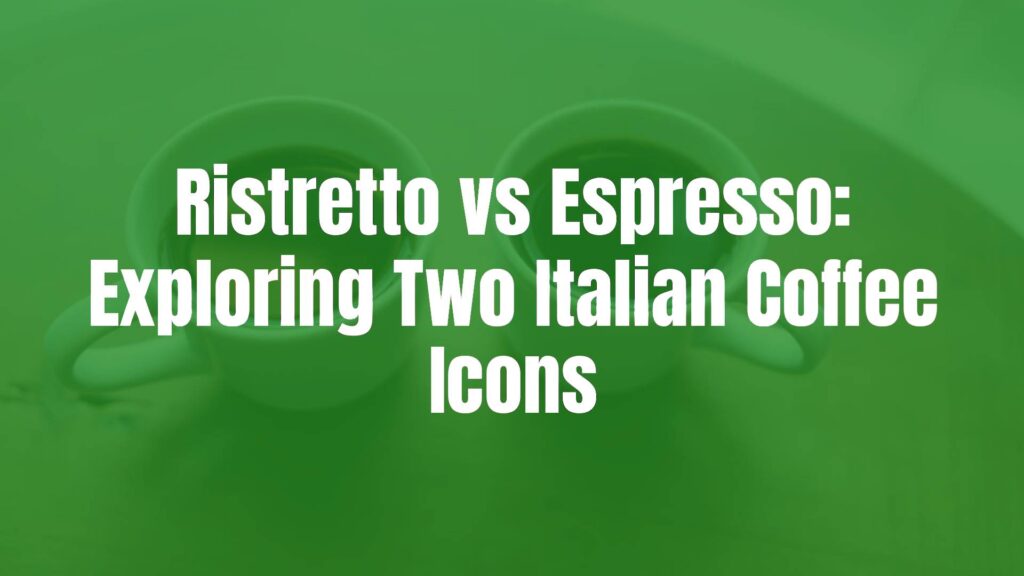Ristretto vs Espresso: Understanding the Distinct Italian Coffee Styles
Introduction to Italian Coffee Culture
Italy is renowned for its deep-rooted coffee traditions, with espresso at the heart of its café culture. While espresso is widely celebrated, ristretto offers a nuanced experience for coffee enthusiasts. Both beverages are often mentioned together, inviting comparisons about flavor, strength, and character. This article explores what sets ristretto and espresso apart, as well as what makes them similar.
Historical Context and Origins
The espresso, born in early 20th-century Italy, revolutionized coffee preparation by using high-pressure extraction to create a concentrated, robust shot. The ristretto, whose name means “restricted” or “narrow” in Italian, emerged later as a variant of espresso for those seeking an even more intense coffee shot. Both share a common origin but evolved to cater to different preferences in intensity and taste profile.
Key Ingredients and Proportions
At their core, both ristretto and espresso use finely ground high-quality coffee beans and water. The difference lies in the ratio. Espresso typically uses about 7-9 grams of coffee with approximately 25-30 milliliters of water. In contrast, ristretto employs the same amount of coffee but only half the water (usually 15-20 milliliters). This results in a much more concentrated extraction for ristretto.
Preparation Methods: Similar Tools, Different Techniques
Both drinks are prepared using an espresso machine capable of forcing hot water through compacted coffee grounds at high pressure. The distinction: espresso is pulled for about 25-30 seconds, while ristretto extraction time is generally shorter, terminating the pour early. This method allows ristretto to capture only the first, most flavorful part of the espresso shot, leaving out some of the bitterness that emerges later in a full extraction.
Flavor, Texture, and Appearance Compared
Espresso delivers a well-balanced shot, notable for its thick body, intense aroma, and creamy layer of crema on top. Its taste profile combines rich, bitter, and slightly acidic notes. Ristretto, being more concentrated, often features a sweeter and bolder flavor with less bitterness. It possesses a syrupy body and a pronounced aroma, but with a milder finish compared to espresso’s lingering aftertaste. The crema on ristretto is typically even thicker due to the higher concentration and shorter extraction.
Serving Styles and Enjoyment
Both drinks are traditionally served in small, pre-warmed demitasse cups. Espresso is the classic staple of Italian bars and commonly enjoyed as a quick solo beverage. Ristretto is favored by those who seek a more intense yet smoother shot, sipped without sugar or milk to appreciate its nuances. Though they look similar from afar, connoisseurs often distinguish them by volume and aroma.
Common Misconceptions and Questions
A frequent misconception is that ristretto contains more caffeine than espresso. In fact, due to the shorter extraction time and smaller volume, a ristretto shot usually contains slightly less caffeine. Another myth is that all espresso machines naturally make ristretto; in reality, baristas need to adjust grind size, dose, and extraction timing to create a true ristretto. Both drinks are sometimes thought interchangeable, but their distinct flavor profiles offer very different experiences.
Conclusion
Ristretto and espresso represent two expressions of Italian coffee artistry. While they share similar origins, ingredients, and techniques, their differences in extraction and resulting flavor open up unique tasting journeys for coffee lovers. Choosing between the two comes down to personal preference: the compact intensity of ristretto, or the classic balance of an espresso.

